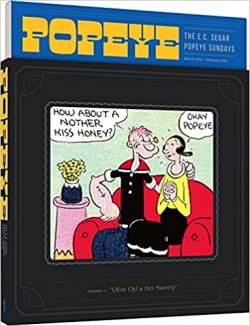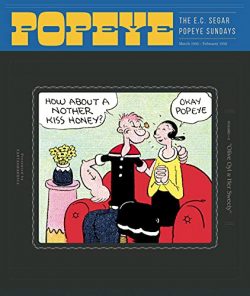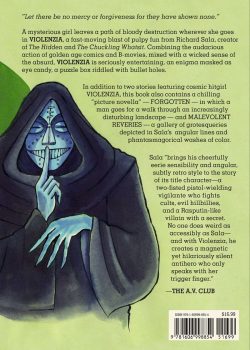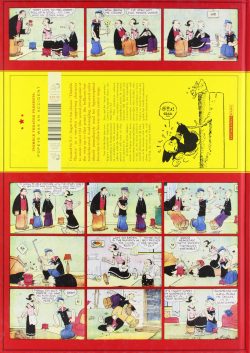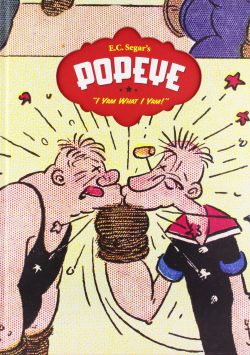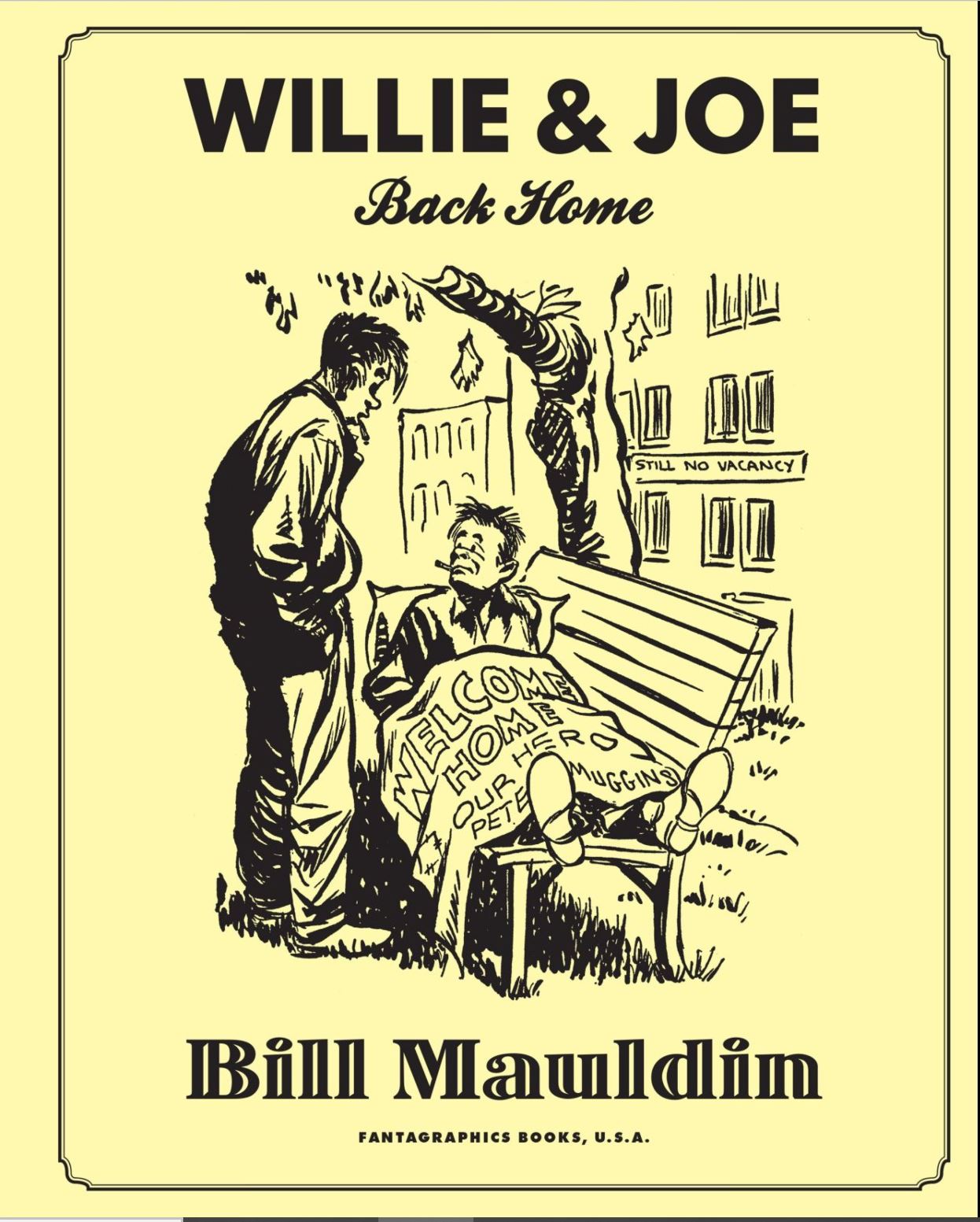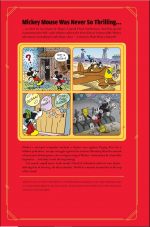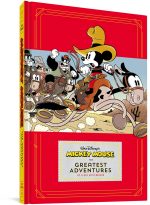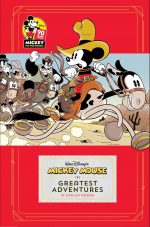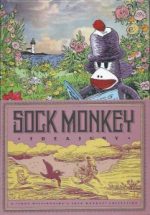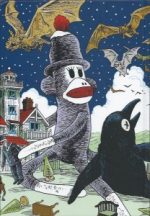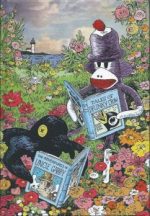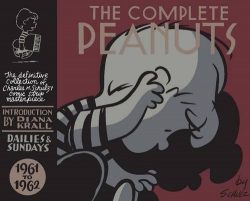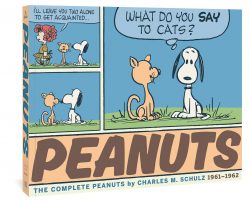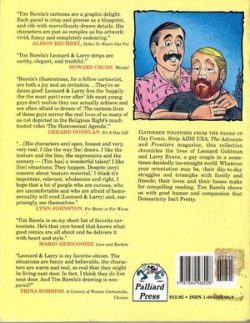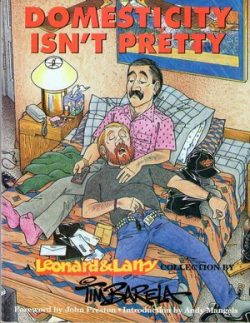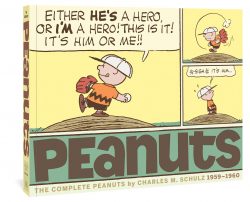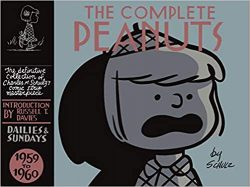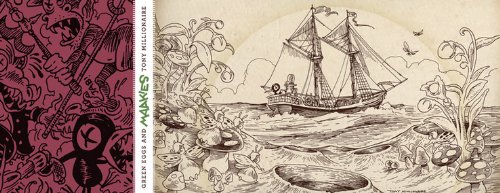
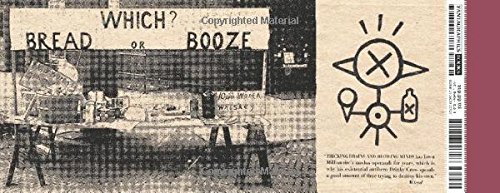
By Tony Millionaire (Fantagraphics Books)
ISBN: 978-1-60699-618-8 (HB/Digital edition)
As a career and lifestyle, cartooning has far more than its share of individuals with a unique perspective on life. Ronald Searle, Charles Addams, George Herriman, Gerald Scarfe, Rick Geary, Steve Bell, Berke Breathed, Ralph Steadman, Bill Watterson, Matt Groening, Gary Larson – the list is potentially endless.
Perhaps it’s the power to create entire carefully curated and scrupulously sculptured worlds coupled with the constant catharsis of vented spleen that so colours their work – whether they paint or draw – or maybe it’s simply the crucible of constant deadlines that makes their efforts so addictive and effective.
Tony Millionaire loves to draw and does it very, very well: referencing classical art, vintage children’s book illustration and an eclectic mix of pioneering comic strip draughtsmen like George McManus, Rudolph Dirks, Cliff Sterrett, Frank Willard, Harold Gray, Elzie Segar and that George Herriman guy. These influences, styles and sensibilities he seamlessly blends with the vision of European engravings masters from the “legitimate†side of the pictorial storytelling racket. The result is eye-popping…
Born Scott Richardson, he especially cites Johnny (Raggedy Ann and Andy) Gruelle and English illustrator Ernest H. Shepard (The Wind in the Willows, Winnie the Pooh) as formative influences.
He has a variety of graphical strings to his bow – such as his own coterie of books for children like the superbly stirring Billy Hazelnuts and Sock Monkey series; animation triumphs and the brilliant if disturbing weekly strip Maakies – which recounts the riotously vulgar and absurdly surreal adventures of Irish monkey Uncle Gabby and fellow dissolute über-alcoholic/nautical adventurer Drinky Crow.
They are abetted but never aided by a peculiarly twisted, off-kilter cast of reprobates, antagonists and confrontational well-wishers such as Drunken Cop, old Wachtel, The Captain’s Daughter and avian Aunt Phoebe whilst constantly opposed by nefarious Gallic crocodile The Frenchman. Or not. Sometimes. It depends…
Launching in February 1994 in The New York Press, the strip is now widely syndicated in US alternative newspapers such as LA Weekly and The Stranger and globally in comics magazines like Linus and Rocky. There was even an animated series on Adult Swim.
Since continuity usually plays second fiddle to the avalanche of inventive ideas and outré action the strips can be read in almost any order, and the debauched drunkenness, manic ultra-violence in the manner of the best Tom & Jerry or Itchy & Scratchy cartoons, acerbic view of sexuality and deep core of existentialist angst still finds a welcome with Slackers, Laggards, the un-Christian and all those scurrilous lost Generations since X… and everyone addicted to bad taste tomfoolery. This lovely lush landscape collection from 2013 compiles two years of impossibly wonderful weirdness and plumbs new depths of daft depravity proving clearly time cannot wither his infinitely grotesque variety one little bit…
In the grand tradition of the earliest US newspaper cartoon features, each episode comes with a linked mini-strip running across the foot of the strip – although often that link is quite hard to ascertain. Nominally and notionally based in a naval setting of rousing rip-roaring 19th century sea-faring situations, replete with maritime monsters and stunning vistas, the dark-and-bitter comical instalments vary from staggeringly rude and crude through absolutely hysterical to conceptually impenetrable.
Be warned: Millionaire’s gags are utterly unfettered by bounds of taste or simplistic acquiescence to wholesome fun-squelching decency.
He often promotes his other creative endeavours on Maakies pages and digresses into autobiography and personal rants, brings in guest creators to mess with his toys and even invites the readership to contribute: ideas, pictures, objects of communal interest – especially any tattoos his dedicated readership can be enticed/bothered to submit. This penetratingly incisive, witty and often poignant cartoon arena is his playground and if you don’t like it, leave… but quietly please, ’cause there’s a hangover going on here most days…
Green Eggs and Maakies offers, in starkly indisputable monochrome, more of the wonderful same with such spit-take, eye-watering, drinks-coming-out-of-your-nose moments as how mermaids and ugly fish are created, fun with snakes, the thoughts of ‘Real Ladies of the Dog Park’; arguably the best Superman fart joke ever, and so much more, scraped like barnacles from the edges of all time and space and history.
Moreover, in a positive frenzy of public-spirited beneficence, this book features ‘Maakies Womb Portraits’; returning visits of ‘Dr. Dubel, Helicopter Faith Healer’; easily absorbed lessons on ‘How to Drink’; scatological marriage proposals, a running commentary on ‘Married Days’ and general sex advice; revelations of ‘The Accidental Sobrietist’; secrets of such self-surgical procedures as removing impacted belly hair or how to conduct an auto-splenectomy; an ode to ‘The Robust Human Liver’ and more bright ideas from ‘The Universal Moon Genius’.
All the timeless favourite themes Millionaire specialises in are on show, and the usual variations of sordid sexual encounters, ghastly interspecies progeny, assorted single entendres, bodily function faux pas and gory death-scenes share space with some of literature’s greatest poets and sots – who never knew what hit them…
There are even a few continued tales starring ‘Noah’s Ark’, barbarian dwarf ‘Klaus Santa, son of Kleas, son of Wachtel’ and two sets of cut-out, colour-and-keep Christmas tree ornaments to make any seasonal pine a domestic no-go zone…
If you’re not easily upset this is a spectacularly funny and rewarding strip, one of the most constantly creative and entertaining in existence today, and if you can thrive on gorge-rousing gags and mind-bending rumination this is an experience you simply cannot deny yourself.
If you’re still not a fan, Green Eggs and Maakies is the perfect opportunity to become one, and if you’re already converted it’s an ideal gift for them that isn’t…
© 2013 Tony Millionaire. All rights reserved.

